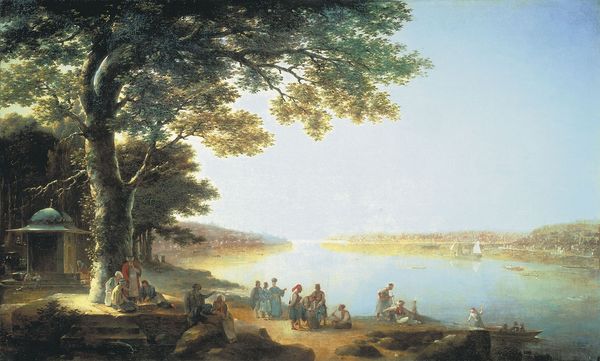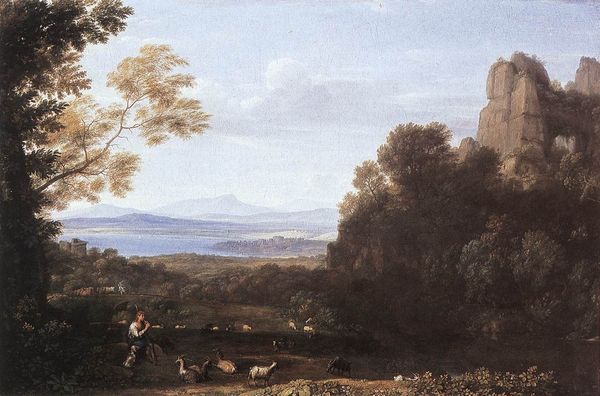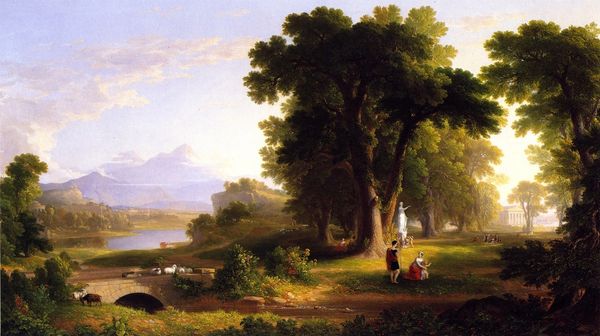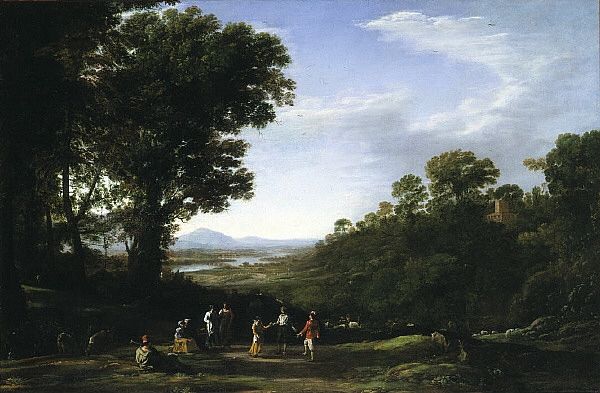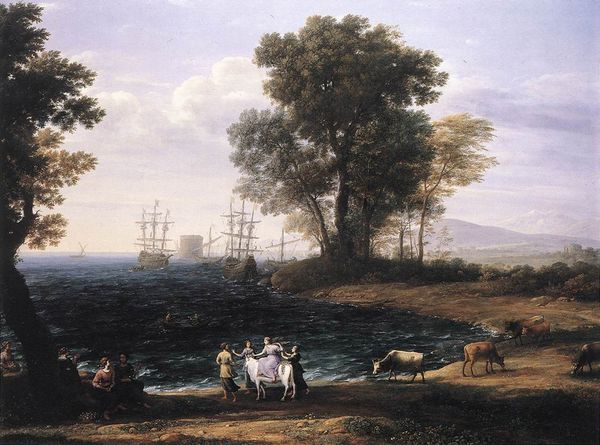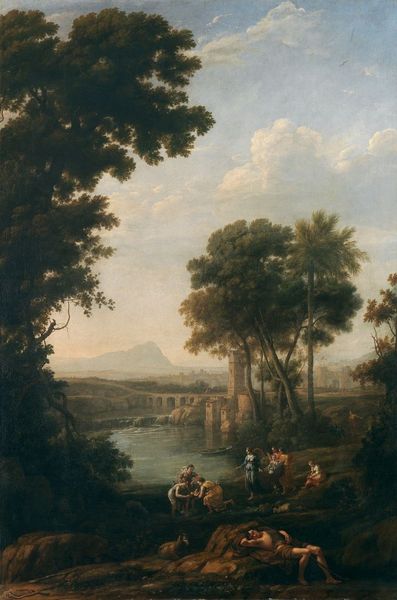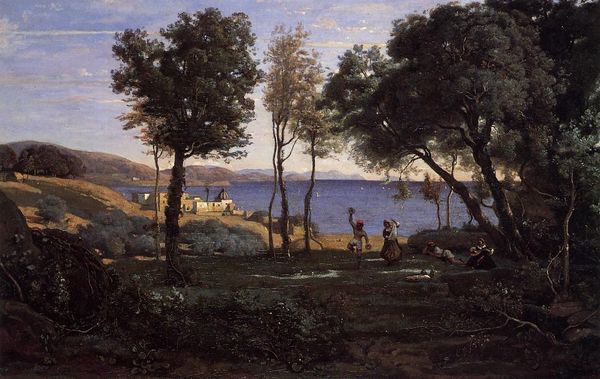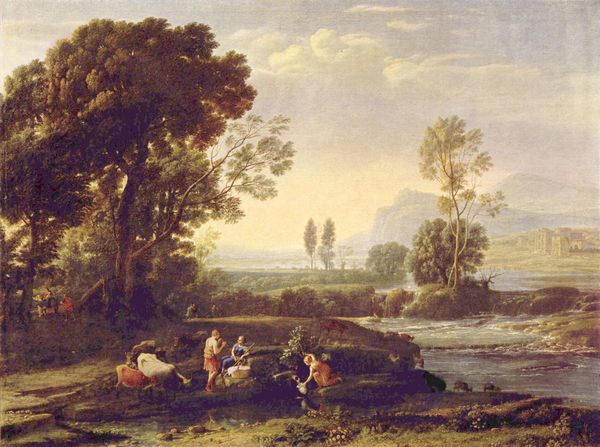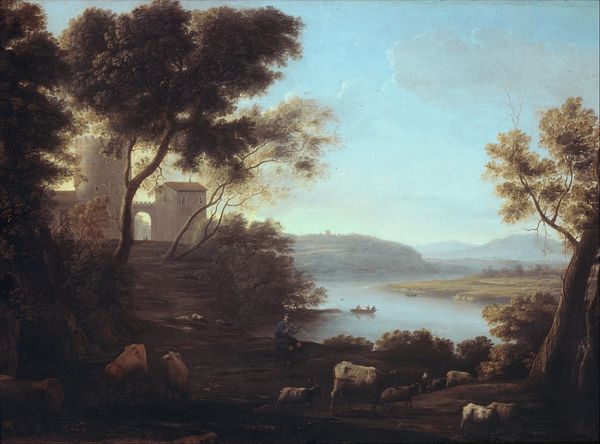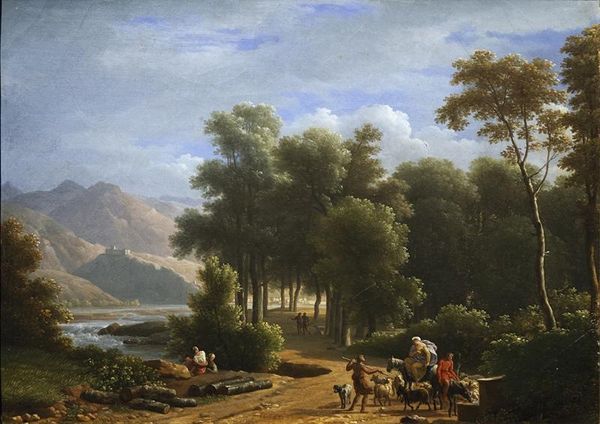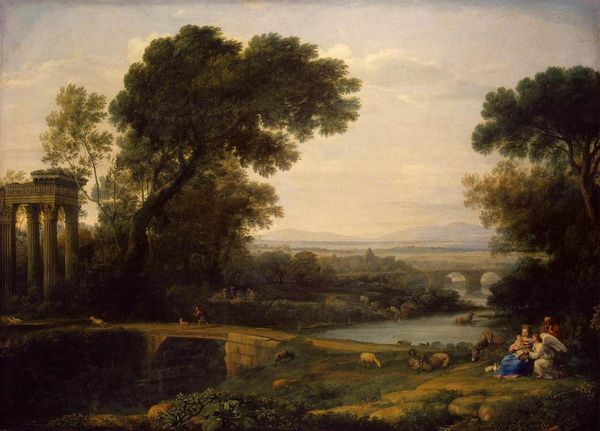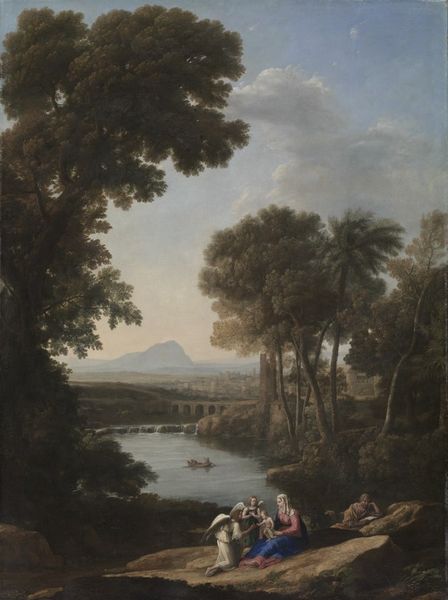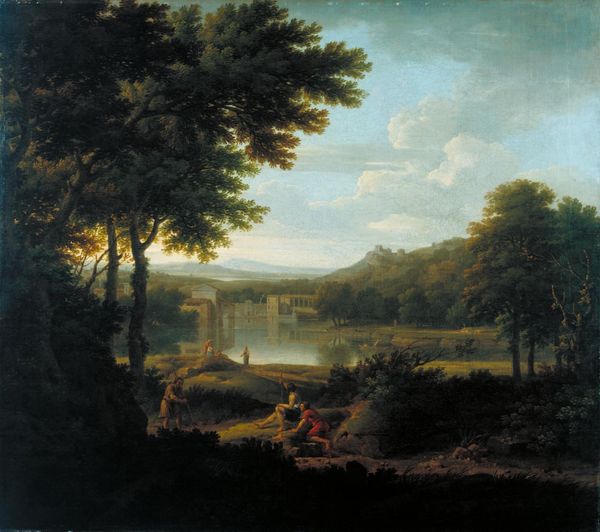
painting, oil-paint
#
baroque
#
painting
#
oil-paint
#
landscape
#
oil painting
#
genre-painting
Dimensions: 197.8 x 150.6 cm
Copyright: Public domain
Editor: We’re looking at Claude Lorrain's "Landscape with Water Mill," painted in 1648. It’s an idyllic scene, but it also feels very constructed, almost like a stage set. What social commentary do you see in a seemingly peaceful landscape? Curator: The “constructed” feeling you pick up on is key. Lorrain, though celebrated for landscape, wasn’t just depicting nature. He was crafting an ideal – one rooted in classical ideas of order and harmony, very much influenced by his Roman context. This ideal wasn't accessible to everyone. The presence of genre figures allows us to witness idealized rural life while the water mill gives indication of industry at that time, hinting at economic foundations propping up such an idyllic vision. How does its current location at the Galleria Doria Pamphilj influence its interpretation today? Editor: Knowing it hangs in the Galleria Doria Pamphilj changes things. It speaks to how powerful families used art to showcase their refined taste and connection to these classical ideals, really reinforcing social hierarchies through the control of imagery. Curator: Precisely. These paintings functioned as status symbols, demonstrating cultural capital. Moreover, placing figures from mythology in pastoral scenes often obscured contemporary struggles of that era, while simultaneously establishing an indirect association of wealth with classical legends. It serves a purpose far beyond pleasing aesthetics, and it subtly endorses a particular worldview. What’s been illuminated for you regarding Baroque landscapes? Editor: I had always understood landscapes from this period as simply appreciating nature, but the social context really highlights how these images served a very political role. I see now they were far more intentional and complicated than I initially thought. Curator: Yes, their sophisticated appeal served as a crucial visual tool that propagated power during the Baroque era. It reminds us to think critically about whose perspectives are centered, and what ideological work landscape painting accomplishes in its representation.
Comments
No comments
Be the first to comment and join the conversation on the ultimate creative platform.
